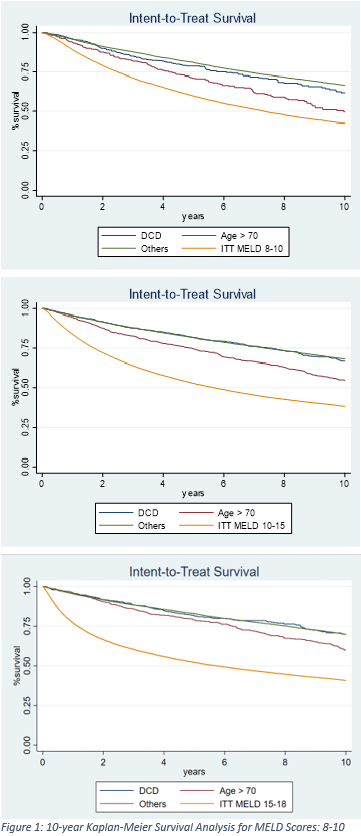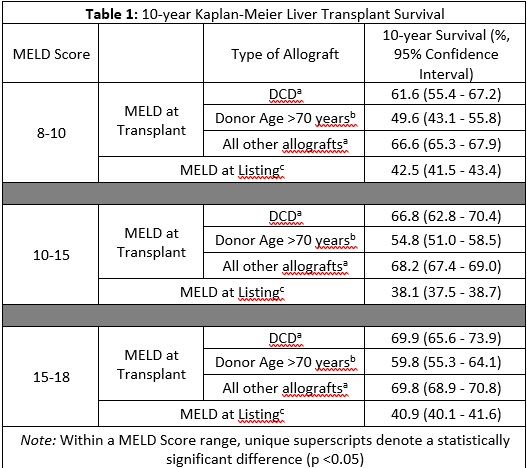The Survival Benefits of Using Marginal Allografts in Liver Transplantation
1Baylor College of Medicine, Houston, TX, 2Department of Abdominal Transplantation, Baylor College of Medicine, Houston, TX
Meeting: 2021 American Transplant Congress
Abstract number: 1152
Keywords: Allocation, Liver, Liver transplantation, Survival
Topic: Clinical Science » Liver » Liver: MELD, Allocation and Donor Issues (DCD/ECD)
Session Information
Session Name: Liver: MELD, Allocation and Donor Issues (DCD/ECD)
Session Type: Poster Abstract
Session Date & Time: None. Available on demand.
Location: Virtual
*Purpose: Our study assessed whether using marginal allografts at initial time of listing provided similar or greater survival benefit versus waiting on the transplant waitlist for a “non-marginal” allograft.
*Methods: We used the United Network for Organ Sharing (UNOS) database to retrospectively analyze 156,646 liver transplant recipients, excluding patients cross-listed for other transplants. We stratified the patients into three ranges based on their MELD scores: 8-10 (n = 33,891), 10-15 (n = 74,191), 15-18 (n = 48,564). Within each MELD range, patients were divided into four groups. Within a range, the first three groups were patients who were transplanted with an allograft from 1) a donation after circulatory death, 2) a donor between 70-100 years of age, or 3) all other allografts not in the first two categories. The fourth category is distinct from the first three as these are patients who were listed with an initial MELD score within the MELD range but were not transplanted within that MELD range. Within each MELD range, we performed a Kaplan-Meier time-to-event survival analysis with death as our primary outcome. Statistical significance was determined using log-rank testing (Stata Corp).
*Results: Figure 1 contains our survival curves for each MELD range, and table 1 provides agranular view of 10-year survival values for the four categories within each MELD range. Furthermore, Table 1 displays statistically significant differences as calculated using the log-rank test for equality of survival functions within each MELD range. Across all three MELD ranges, all four survival curves differed from every other survival curve (p <0.05) aside from DCD vs. all other allograft donations. Notably, across all three MELD ranges, patients who remained on the waitlist with a given MELD score had worse 10-year survival vs. all three other categories of patients who received DCD, donors > 70, or other allografts at that same MELD score.
*Conclusions: In patients with MELD scores as low as 8, this analysis demonstrates that there is significant benefit gained by using marginal allografts in patients who would otherwise remain on the waitlist as their condition deteriorates until a non-marginal allograft is procured.
To cite this abstract in AMA style:
Malik TH, Godfrey EL, Rana A. The Survival Benefits of Using Marginal Allografts in Liver Transplantation [abstract]. Am J Transplant. 2021; 21 (suppl 3). https://atcmeetingabstracts.com/abstract/the-survival-benefits-of-using-marginal-allografts-in-liver-transplantation/. Accessed December 13, 2025.« Back to 2021 American Transplant Congress


